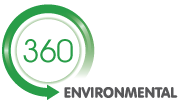Following the publication of the Government’s 1 April response to the EPR consultation, Defra has produced guidance to help businesses prepare for the data gathering that has to be carried out from 1 January 2023.
New legislation is supposed to be published by the end of this year to lay out the data recording and reporting requirements that will be required to prepare for EPR implementation from the beginning of 2024. However, it now seems doubtful this will see the light of day in time for 1 Jan 2023, so Defra and the EA will have to prepare affected parties through guidance.
The Guidance is aimed at three types of business:
Large producers – ‘brand owners’ that place products into packaging that is sold under their name and importers of packaged products and business that sell empty packaging to producers who fall beneath the threshold. £2m turnover and 50 tonnes annual packaging handled thresholds apply. Online market places – UK businesses that sell products from overseas suppliers – will also be obligated. Large producers will also be responsible for reporting empty packaging sold to businesses below the small producer threshold.
Small producers – as above but who handle 25-50 tonnes per annum with a turnover £1-2m.
Sellers – those that sell packaging goods to the end user..
Large ‘producers’ who will be the ones having to meet targets and paying the bill, both for the £1.7bn modulated fee and PRN costs. They will need to start collecting data 6-monthly from 1 Jan 2023 and report within 3 months of the end of the 6 months. The data will need to relate to each of the current 6 materials plus fibre-based composites including disposable cups and be split between household and non-household. The Scheme Administrator (yet to be decided) will determine the fee per tonne placed on the market based on this data which will be used to meet the £1.7bn bill funding local authorities for household packaging waste collections and recycling. In 2024, this will simply relate to the material but from 2025, it will relate to the recyclability of different types of packaging within each material. Annual targets will also be applied to the data which, similarly to now, will then require the purchase of PRNs.
Small producers will just have to record the same data from 1 Jan 2023 and report on what was handled in 2023 by 1 April 2024. They will have to pay a registration fee, but will not have to pay for PRNs or the fee raised by the Scheme Administrator.
With sellers, the position is less clear, but it is understood that sellers – including online sellers – above the £2m/50 tonne threshold will be required to report separately on the tonnage of each packaging type they have placed on the market in each UK administration – England, Scotland, Wales and NI. This will include filled or empty packaging supplied to consumers, any rented out packaging such as the blue pallets and any imported packaging discarded by the seller before selling or exporting. Calendar year 2023 data must be submitted by 1 December 2024.
As if all this is not complicated enough, the data to be collected by all the categories of business above must be sorted by:
- Individual materials
- Whether it is used for a primary, secondary or transit purposes
- Whether it will become household or non-household waste
- Whether it is likely to end up in street bins
Some might question the sanity of introducing such complex data requirements when many companies struggle with the current much simpler data requirements. The provision of seller ‘nation’ data seems particularly optimistic and to be frank, fairly pointless. But Defra seem determined for this to all start from 2023, so any company that looks as though it will fit into the above categories for data gathering will need to start preparing for a significantly more complex data recording process from 1 Jan next year.
